Speed Garage
byThe UK is often considered to be a difficult zone for musical expansion. Thanks to the self-sufficiency of the British musical market, it can itself set worldwide trends for relevant music on one hand and deny the world admiration on the other, resisting to the very end. Musicians from outside as well as their agents and producers award themselves with huge scores for conquering this impenetrable fortress. Musicians from inside, evidently unhappy with foreign music, create their own and occupy the first positions in the genre. Speed garage is an explicit example of the process of implanting music from one culture to another, while transforming it under the influence of the local culture. This is what sociologists call acculturation.
1993 is the beginning of speed garage history. At that time, deep house and garage house were extremely popular in Europe while the UK was recovering after the second coming of ecstasy. Officially, raves were forbidden and mass escapes from reality were only possible under the roof of clubs, which tried to relax the public with soulful house music; some neighbourhoods played new types of hardcore techno while jungle caught more and more young minds. Experts say that speed garage came indirectly from the latter—at that time jungle, which was gaining power, started leaning towards a dark and hard sound that didn’t please some portion of the growing audience. The counter-force shifted to the south of the country in the form of small parties and uncrowded underground raves, in order to escape the attention of law-enforcement bodies. There, a small group of DJs started playing garage house at a high speed: from 120—125 to 128—130 bpm.
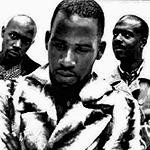
Dreem Teem
Accelerated garage house from 1994
The DJ trio Dreem Teem, musical accelerators of garage house, became the leaders of the new movement. They played mostly instrumental (dub) versions of tracks—at such a tempo, the singer’s voice changes in tone and becomes high-pitched, what they call chipmunk voice, after Alvin and the Chipmunks who sang for children at the end of the 50s. Because of this acceleration, speed garage is also called plus eight (Plus-8, +8, sometimes +6). This means that there’s an additional percentage increase in the acceleration of disc rotation, controlled by the DJ with a special runner on the dashboard—so-called pitch control.
The same year, a group of DJs with a small audience moved to clubs, where they occupied small areas for entertainment and the Sunday scene appeared. It was named Sunday because the owners of night cubs didn’t consider garage house very appealing or profitable—it didn’t bring as much money as hardcore techno, jungle and deep house, so they were allowed to rent clubs on Sunday nights. Only later, when speed garage became profitable and appealing, jungle and hardcore had to move, giving Friday and Saturday nights to garage. The members of the scene started joking about the Friday scene and Saturday scene, but only the Sunday scene term was coined. Speed garage came indirectly from jungle, firstly because new DJs accelerated garage house like the godfathers of jungle played hardcore break records faster, and secondly because the audience that promoted speed garage came from jungle parties and asked for overseas house to be played with more speed and energy, but not as in accelerated jungle—they can have 170 bpm but we’re good at 130. No one spoke about speed garage back then. Despite these obvious actions, the music was called underground garage—indeed, not many people knew about it, but this soon changed.

Armand van Helden
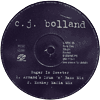
CJ Bolland — Sugar is sweeter (Armand’s drum‘n’bass remix) 1996
Remixed by Armand van Helden
From Sugar is sweeter single, Internal
Armand van Helden’s remix of CJ Bolland’s Sugar Is Sweeter is considered to be the first true speed garage track. In fact, everyone expected a miracle to come from the Brits, who were supposed to get a working prototype of underground garage after three years of experiments. But the miracle didn’t happen and Armand van Helden did everything instead of them. Now he’s considered to be the founder of speed garage with its massive percussion and heavy bass line. Many musicians tried to add dense bass and other elements to the originals, but Armand was the first to offer a working recipe for the new music. The UK garage movement started to grow (towards the mainstream). This is how Van Helden explained drum‘n’bass in brackets: “For me when I first started to make speedgarage, I didn’t term it as speedgarage. I’d been into drum and bass for years. The scenario was, I'm not gonna try and make drum and bass, I’m gonna take it and put it with house and see what happens. That’s all it is, that's the birth of Speedgarage.”
During 1996, Armand released a few other remixes that turned out to be pivotal for the new genre—Tori Amos’ Professional widow and Nuyorican Soul’s Runaway. It was Tori Amos’ manager who introduced Armand to her, because he really enjoyed his works. The 3-second sample of the bass guitar from the original became the bass foundation of the remix and really impressed those who were in the speed garage movement, already expanding at the time. Soon, similar tracks started to appear—this sample made the composition very funky.

Tori Amos

Tori Amos — Professional widow (Armand’s star trunk funkin’ remix) 1996
Remixed by Armand van Helden
Fron Professional widow single, Atlantic
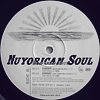
Nuyorican Soul — Runaway (Mongoloids in space) 1996
Vocal Linda Caballero
Remixed by Armand van Helden
From Runaway single, Talkin’ Loud
Van Helden scored a knock-out with a remix of Spin Spin Sugar with heavy bass. This was true garage and the best confirmation is that the author mentions it in brackets. British Muzik Magazine named Van Helden’s remix of Spin Spin Sugar the best remix of 1997. Even though Spin Spin Sugar only got to the 21st position and managed to stay in the singles chart for only three weeks, it’s more than just statistics—it formed a full image of the new genre. This was true garage: dirty, rough and coarse—from notorious parts of the city, ghettos with chain-link fencing and dim glass throughout the entire height of high-rises. And Kelli Dayton’s voice is a perfect match: thick, vicious and stonedly alienated. Someone noticed that the London garage sound for Britain is like grunge from American Seattle—a local cultural specialty.
Armand brought together all the elements he had mastered separately: a rumbling rhythm that has a 4/4 kickdrum but at the same time micro-breaks too—like a complicated performance on a typewriter. Finally, a massive bass, dominating the percussion, was brought to light. Some additions: a slow voice effect (time stretching) and samples of sirens with multiple echo—this is how Jamaican dub-musicians used to show off.
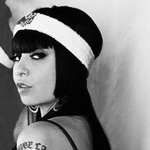
Kelli Dayton
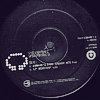
Sneaker Pimps — Spin spin sugar (Armand’s dark garage remix) 1997
Vocal Kelli Dayton
Remixed by Armand van Helden
From Spin spin sugar single, Virgin
Professional Widow exploded the charts and became number two in the first week and number one in the second week. Altogether, Tori Amos’ single with an underpaid remix (according to the rumours, Van Helden was either paid very little or nothing at all) stayed in the chart for ten weeks. Sugar Is Sweet spent two times less time there and only reached number 11. Experts wonder how it was possible that a new genre appeared from remixes. It’s probably even stranger that UK garage needed a kick from an American musician for its development.
Music & stories
12″ pages on social networks and weekly materials that you can’t find on the website. Cool electronic music videos, tune of the week, histories behind albums and FridayFive tracks. Join!